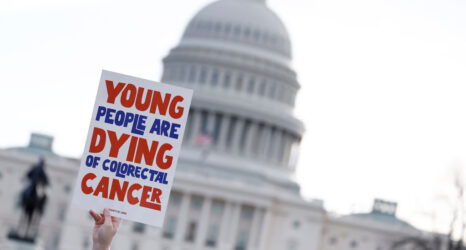Evelyn Yang, the wife of presidential candidate Andrew Yang, recently disclosed that she was sexually assaulted by her OB-GYN while pregnant. Unfortunately, she isn’t alone.
American medicine’s record with women, generally, and female sex organs, specifically, remains appalling.

In January, a CDC study in JAMA about unnecessary pelvic exams revealed that, despite clear guidelines, physicians perform an estimated 2.6 million unnecessary pelvic exams and pap smears on girls and young women between the ages 15 to 20—costing them $123 million dollars a year.
New legislation in Wisconsin addresses a shocking practice in which anesthetized patients, under a general consent agreement, are being subjected to pelvic exams by medical students across the state. Ten states have already passed measures demanding consent for such exams, many in response to the Larry Nassar scandal, and calls for more ethics in healthcare policy (such as this article in the journal Bioethics) have also swelled to a shout.
As a communication researcher who has been working with healthcare professionals to improve their communication for over 20 years, I believe unwarranted pelvic exams should be addressed through both better communication and legislation.
The history of American medicine and women’s bodies is problematic. One hundred years ago, unscientific surgical “solutions” for female hysteria ended. In the years since, the medical profession has profited from a systematic smearing of midwifery. Overall, physicians have been remarkably silent on political efforts to undermine women’s reproductive rights. Forced sterilization (with physician accomplices), fertility “specialists” impregnating clients—there are plenty of bad actors. For those of us who closely follow gender issues in healthcare, these latest stories are unsurprising.
Recommendations to curb pelvic exams to asymptomatic, non-pregnant, adolescent girls and women under 21 began in 2009. Delaying Pap smears for the same demographic was likewise suggested in 2009. Yet the practice has continued. Put another way, over the past ten years, half of the pelvic exams and nearly three-quarters of the Pap smears conducted in this country for this age group were unnecessary.
In 2015, Barbara Levy (then vice-president of policy for the American College of Physicians) proposed that the pelvic exam, regardless of the recommendations, was “a bonding experience” and “is a time of intimacy between the patient and care provider.” To counter Dr. Levy, honest, face-to-face, dialogic communication can also be a bonding experience and without invasiveness or side effects.
Melissa Simon (vice chair of clinical research in the Department of Obstetrics and Gynecology at Northwestern University’s Feinberg School of Medicine) suggests “It’s really hard for healthcare providers to unlearn things that they’ve been doing for years, let alone decades.” I am not an OB-GYN expert, but I am certain that healthcare professionals in all specialties are expected to change in response to peer-reviewed evidence.
While the costs and discomfort—pain, anxiety, embarrassment and false positive results—are arguments against unnecessary exams, another point is being overlooked. When a teenager makes an appointment to see a doctor, the medical professional has a unique opportunity to coach the patient on the importance of open communication and shared decision-making.
When I began teaching health professionals to better communicate with patients, I championed good communication as a way to avoid malpractice suits, which is valid. But I now encourage dialogue between professional caregivers and patients because it improves health outcomes and relationships for both parties. Instilling trust is unlikely when physicians conduct unwarranted examinations. Rather, medical professionals should preview what might be accomplished during an office visit and ask the patient what she is there to achieve.
As UC San Francisco Professor of Obstetrics George Sawaya submits, the JAMA study should inspire girls and young women to inquire, “Why do I need this exam?”
We have come a long way since the 1950s of Talcott Parson’s “sick role” and the acquiescence of the patient to the domineering doctor. More evocatively, the crimes of Larry Nassar and others have taught us that voices of authority are not to be followed blindly.
Young people are especially vulnerable to becoming victims of routines that perpetuate power dynamics in the clinic. As I have learned in my work with outstanding healthcare providers, the patient/physician relationship is best thought of as a partnership: physicians are the experts about evidence-based approaches and patients are the experts about their bodies and their health needs. Communication is what binds the expertise. Dialogue, however, requires reinforcement, ideally encouraged by the provider.
As Wisconsin wrestles with what should be a slam-dunk in terms of legislating protections for anesthetized patients, I’ve got to ask why this movement isn’t national. Leaders who have passed this kind of law in other states should get together with some stalwart health professionals and move this into the federal realm. Simultaneously, med school and residency curricula needs to ramp up communication, patient care, and practice-based learning and improvement (ACGME competencies all) so they are accepted as the core skills for long-term successful healing.
Evelyn Yang was intimidated when her doctor questioned her about sexual activity. By her own report, he benefitted from and relied on her silence. Teaching young patients to advocate for themselves at every medical appointment and to ask informed questions before consenting to exams may help correct for an imbalance of power between patients and physicians.
Medicine continues to evolve. But trust is forever and always the foundation of meaningful relationships.





